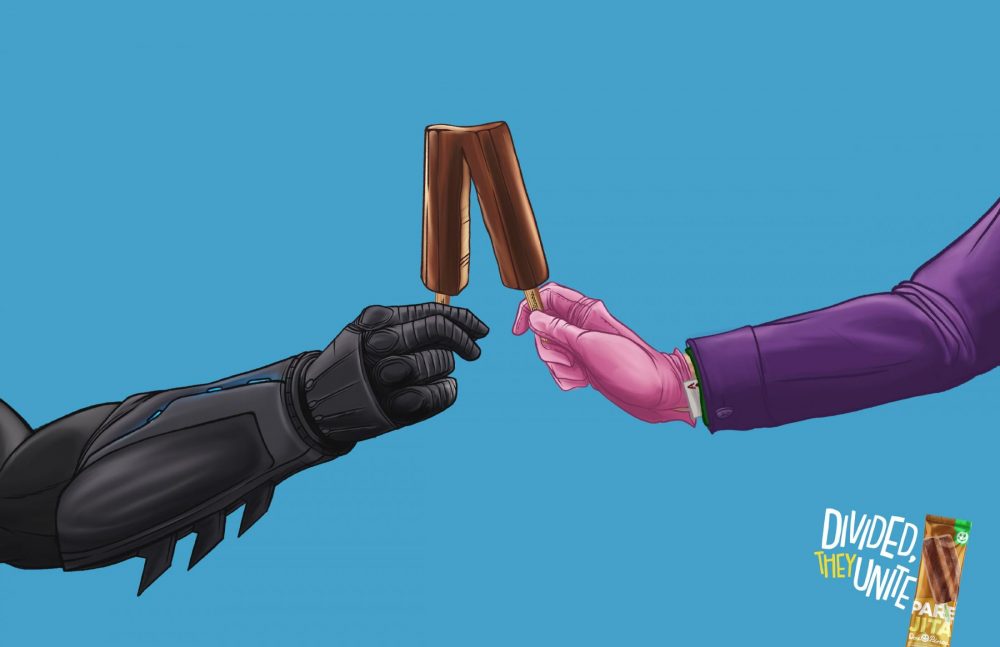
Stories about villains and heroes have captured the human imagination for centuries, and now those characters are ubiquitous on the packages and labels of products. But do these characters influence whether people are willing to buy something, and how much they’ll pay for it?
Professor Tamara Masters of Brigham Young University predicted that vice, or indulgent, foods with hero labels would be more compelling than the same foods shown with villain labels, while healthy, or virtue, foods would be more compelling with villainous labels than hero labels. The study abstract was recently published online in the Journal of Consumer Psychology.
“If someone wants an ice cream bar and it is packaged with a hero on the label, the kind and benevolent character makes the indulgent product seem less vice,” Masters says. “But a product that is already healthy, like water, would benefit more from villain labeling because it makes the water seem more edgy and exciting.”
In one experiment, half the participants saw an image of a Fiji bottle of water and half saw an ice cream bar. The description of the water bottle was either “Villainous Spring Water – unforgiving, cunning, and dangerous” or “Heroic Spring Water – patient, courageous, and with integrity.” The ice cream bar also showed one of the two descriptions. The results revealed that the participants were willing to pay more for the bottled water when it was offered with a villainous label than a heroic label, and they were willing to pay more for the ice cream bar shown with the hero label.
The researchers also tested their hypothesis in the real world by setting up a sampling table for cheese curds in a grocery store. They changed the sign describing the cheese curds throughout the day to show images of either Luke Skywalker or Darth Vader with the words “Healthy and Nutritious” or “Tasty and Decadent.” The participants sampled the cheese curds and then wrote how much they’d be willing to pay for a package of 10 curds. The data revealed that consumers were willing to pay an average of $3.45 when the curds were described as healthy and nutritious with a picture of Darth Vader, but they would pay only $2.17 with the same description accompanied by an image of Luke Skywalker. Conversely, when the curds were described as tasty and decadent, consumers were willing to pay more when the picture showed Luke Skywalker.
The researchers also studied grocery store sales data to determine if consumers followed the pattern with their purchases. The investigators tracked sales of a vice product, Betty Crocker fruit snacks, that were packaged with either a heroic image of Scooby Doo or a villain from Star Wars. They found that consumers favored the hero labeling with the vice product, with 289 Scooby Doo sales compared to 156 Star Wars sales.
In a country battling an obesity epidemic, these findings could inform policy makers who are eager to discourage unhealthy food choices and encourage nutritious eating. Showing healthy food with villains could make nutritious food more exciting, while villain labels on indulgent foods could decrease interest in those foods.
“We see hero and villain labeling everywhere we go, and people don’t realize how they use these labels to justify their buying decisions,” Masters says. “People may want to be healthy and spend less, but they still want something that is exciting, and the right labeling can make this possible.”


Leave a Reply